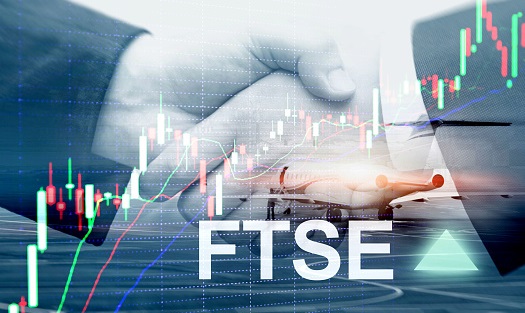Major US equity bourses saw strong gains yesterday, with the S&P 500, Dow and Nasdaq 100 indices all rallying more than 1.0%. Having dipped as low as the 4240 marks on Monday, by the end of Tuesday’s session, the S&P 500 had surged back above the 4300 level and managed to close above 4320. E-mini S&P 500 futures this morning point to further gains of about 0.3% this morning and are trading in the 4330s. That amounts to a 2.5% rally from Monday lows and leaves the major US equity index just over 1.0% below record highs. That’s impressive stuff for sure and send the message to the broader market that equity investor confidence remains very strong. It seems for now that the analysts/market commentators who called for calm amid the recent sell-off have been vindicated (for now). Broadly speaking, it makes sense that US equity sentiment remains firm given 1) US vaccination rates are generally high, meaning despite the delta variant driving another wave of infections there, a return to severe lockdown is highly unlikely, 2) the market remains confident that the Fed is going to tighten monetary policy too quickly and 3) the fact that long-term US bond yields remain close to record low levels, keeping the TINA narrative alive (the idea that because bond yields are so bad, there is nowhere worth investing other than equities). Strength in US equity sentiment has facilitated a pretty decent recovery in European equities too, the Stoxx 600 is up about 1.3% this morning and has now recovered more than 50% of the recent pullback from record highs. For reference, after hitting record levels above 460 last week, the major pan-European index dropped more than 4.0% by this Monday to just above 440 but has since recovered to back above 450. Some European equity investors will be hoping for a dovish tone on the economy and monetary policy from the ECB and its President Christine Lagarde when the bank unveils its latest monetary policy decision tomorrow – this might also be aiding European equity sentiment.
The recovery in equity markets is indicative of a broader recovery in the market’s appetite for risk, which is also being seen in the price action in bond and commodity markets. Developed market bond yields are higher globally; 10-year yields are around 1bps higher on the session in the UK, Germany, France and Canada and are up nearly 4bps in the US to back close to 1.25%. That’s a 12bps rally from Monday’s lows and puts the US 10-year yields bang to almost bang on its 200DMA (which currently resides at 1.25%). US 30-year yields are up an even sharper 5bps on the day to back above 1.90%. But neither are anywhere the highs seen back in Q1 this year (of 1.77% for 10-year yields and above 2.50% for 30-year yields). The recent bounce in yields as a result of risk appetite might well be used by traders as an opportunity to add to bond long positions (i.e. the bet that yields will move lower), which has been a winning strategy over the past few months. The strategy of long bond seems to have performed well, particularly in recent weeks, given 1) the fact that markets remain broadly confident that, as the Fed says, the spike in US inflation will be “transitory” (i.e. long-term inflation expectations remain low), 2) the FOMC’s recent hawkish shift means that the Fed will not be allowing the US economy to run too hot (meaning lower economic growth and inflation expectations) and 3) continued concerns about the pandemic driving safe-haven demand.
Now onto commodity markets, crude oil prices are higher on the session and are tracking stocks higher, but the recovery from lows is far less impressive than that seen in equity markets. Front-month WTI futures, which hit the $77.00 mark earlier on in the month but hit multi-week lows of just above $65.00 earlier in the week, have only managed to recover to just above the $68.00 level this morning. That amounts to a recovery of about 4.7% from this week’s lows, which might seem impressive, but not given the fact that prices remain about 11.5% from this month’s highs. The resurgence in the Covid-19 cases worldwide as a result of the spread of the Delta variant, combined with fears about the spread of the South African beta variant (which the AstraZeneca vaccine supposedly does not offer that much protection against) seems to have delivered a blow to crude oil demand recovery forecasts for the next few months. Indeed, many countries with low vaccine coverage are being forced to tighten lockdown restrictions and international travel has been dealt a further setback in recent weeks as even countries with high vaccine coverage tighten restrictions on travel freedom. All the while, after OPEC+’s weekend deal, we now know that global supply will start to increase at a clip of 400K barrels per day each month from August until the cartel’s output cuts (currently an agreement to cut cartel output by 5.8M barrels per day) is unwound next year. That’s not great timing for both of those bearish factors to arrive and suggests crude oil might have a rougher time recovering back to recent highs than tell US equity markets (which are already most of the way there). Quickly on precious metals, gold continues to trade with a lack of conviction and direction given the conflicting impulses of 1) the recent increase in safe-haven demand and drop in bond global yields (both gold positive) versus the recent rise in the US dollar (gold negative). The precious metal continues to trade close to the $1800 level. For its to push higher, yields will need to continue to fall, and USD will have to unwind some recent gains. Conversely, if yields start to move higher in tandem with the strengthening US dollar, gold will almost certainly lose its grip of the $1800 level.
On the topic of the US dollar, it retains a decent underlying bid. The DXY is this morning flirting with the 93.00 level, having broken above resistance at the previous monthly highs in the 92.80s earlier on in the week. Australian bank Westpac makes the very good point that the US dollar seems have been the beneficiary recently of a win-win situation; on the one hand, as Covid-19 delta variant fears have risen (as seen over the last week or so), the dollar has benefitted from safe-haven inflows, while on the other hand, when risk appetite has been more stable (i.e. stocks and commodities like crude oil grinding higher, which has been the case most of the year so far), the focus in FX markets has been shifting back to central bank divergence, which has seen the dollar in favour since the mid-June hawkish FOMC shift. That would imply the buck is likely to continue to do well in the coming weeks.
Elsewhere in FX markets this morning, things are mixed. The risk sensitive NOK is seeing some recovery after taking a battering in recent days and is the best performer in the G10, likely deriving support from the modest recovery in oil prices being seen. In the underperformers, there is AUD and JPY, both down about 0.2% on the day versus the buck. The latter is seemingly suffering amid the decline in interest in safe haven assets as risk appetite in stock markets recovers. The former is likely suffering as a result of 1) ongoing fears about the economic impact of the renewed rounds of lockdown in Australia given the recent, concerning delta variant outbreak there, 2) last night’s weaker than expected retail sales numbers and 3) this week’s dovish biased RBA minutes, which continues to claim no rate hikes into 2024, meaning the RBA has a comparatively dovish stance versus other G10 central banks. USDJPY has recently moved back above 110.00, having been as low as 109.00 earlier in the week, while AUDUSD continues its recent grind lower, and this morning printed fresh multi-month lows under the 0.7300 level (first time since under this level since November 2020). The rest of the G10 (i.e. EUR, GBP, CHF, NZD, CAD) are for the most part flat, amid a lack of catalysts to drive price action in any of their major crosses.
The Day Ahead
Canadian New Housing Price Index data for the month of June is out at 1330BST, but the Loonie is unlikely to be too concerned. Otherwise, there is no economic data of note. Crude oil traders will be closely watching official weekly US EIA crude oil inventory data which is set for release at 1530BST after last night’s surprise build in weekly private inventories weighed on oil prices. Bond market participants will be watching the outcome of a $24B 20-year bond auction which will take place at 1800BST.




